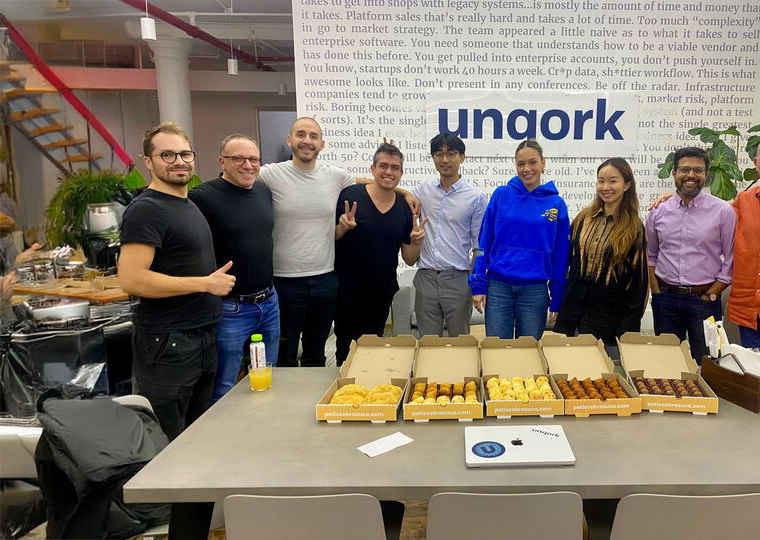Exactly how much value can no-code generate for your business? Let’s run through a few scenarios to find out.
Whether you’re a small business or a large enterprise, there’s no denying that software, applications, and digital experiences have become huge drivers of business value. But how do we define and quantify business value?
Generally speaking, business value can be broken down into two broad categories—cost savings and revenue creation. For example, an application that digitizes a formerly paper-based process can help save costs by reducing errors and putting more productive hours back into the year. On the other hand, a user-friendly customer onboarding portal might reduce friction in the sales process and boost customer retention, which increases revenue.
However, creating powerful solutions that either cut costs or generate revenue (or ideally, both!) is no easy task, especially when relying on traditional development methods. Coded solutions often require teams to rely on multiple disjointed tools, highly-skilled engineers, and expensive legacy maintenance. With all of this money invested in building such applications, it’s almost impossible for organizations to chip away at their technical debt and focus on ideas that will make an impact. No-code makes it easier to unlock business value by eliminating these pain points. To help you better understand the Unqork difference, let’s crunch the numbers.
Calculating the Value of No-Code
No-code development with Unqork is a simple way to take any software idea you have and magnify its value by making it faster, easier, and more cost-effective to execute. To calculate the value this would bring to your business, start by considering the numbers you’ve already projected for the application you want to build. As an example, let’s say you estimate that the digital marketplace you have in mind will bring in $100,000 a month after its creation.
Watch our recent webinar on how accelerating the development process with no-code can lead to digital resilience.
Using traditional software development methods, you’ve estimated that your project will take you about 5 months and $800,000 to complete. If you start building in January of 2021, you’ll launch in June, which leaves you 7 months left in the year for the application to bring in revenue. If your projections are correct, you should be looking at a $700,000 return on investment by the end of 2021.
Unfortunately, this calculation doesn’t account for the fact that large-scale IT projects run 45% over budget and 7% over time, on average. However, even if everything runs according to plan, your $800,000 investment in the build means you’ll still be $100,000 short of breaking even at the end of the year.
In the meantime, imagine that one of your direct competitors is using Unqork to build a similar product. In fact, Unqork recently worked with a global insurance brokerage to develop an end-to-end broker and carrier sales marketplace in just 8 weeks. At this pace, this means your competitor was able to get their software to market 3 months ahead of you, giving them 10 months left in 2021 (instead of your 7) to see a $1,000,000 return on investment.
But Wait! There’s More
Even if we stopped our calculations there, your competitor has already seen $300,000 more return on their investment in 2021 alone. But this number doesn’t take into account the additional cost savings and competitive advantage they’ve gained while your team was navigating a complex codebase.
Your competitor’s faster turnaround time—2 months spent in development as opposed to 5—means they not only beat you to market, but they also completed their project with a significantly smaller budget.
Your competitor’s faster turnaround time—2 months spent in development as opposed to 5—means they not only beat you to market, but they also completed their project with a significantly smaller budget. Instead of spending upwards of $800,000 on outsourcing or hiring engineers to build their application, they used Unqork to take advantage of a platform that their existing team could use. This resulted in an application that was more aligned with the needs of the business, which saved them even more money because they didn’t have to go back and retool the application after every round of feedback.
We also have to remember that not only did your competitor build a complex application faster and for less money—it’s a very similar product to what you hoped to offer. This means it’s very likely that they stole some of your existing and potential customers, who are often ready to jump to whichever option offers the best customer experience. This can quickly shave down your projected $100,000 revenue per month.
Last but not least, while you’re still working through tedious traditional development processes, your competitor’s rapid 2-month build means they can move on to work on new projects. As you slog through the final months of your 5-month build, your competitor has an additional 3 months to ideate around new value-generating applications. During that time, they might start building a second product with Unqork before you’ve even gotten your first app to market. Before you know it, your competitors who chose no-code over code (or even low-code!) are locked in a winning cycle.
The No-Code Difference
Even though our specific estimates here are hypothetical, the numbers don’t lie. To understand the business value Unqork can bring your organization, simply think about the value you hope to see with your application and compare revenue generation and cost savings with no-code vs. traditional development. You’ll quickly see that no-code comes out on top every time.
Want to learn more about how no-code can help bring your product idea to life? Schedule a personalized demonstration with one of our in-house experts, or sign up for the Unqork newsletter to get no-code updates delivered straight to your inbox.





